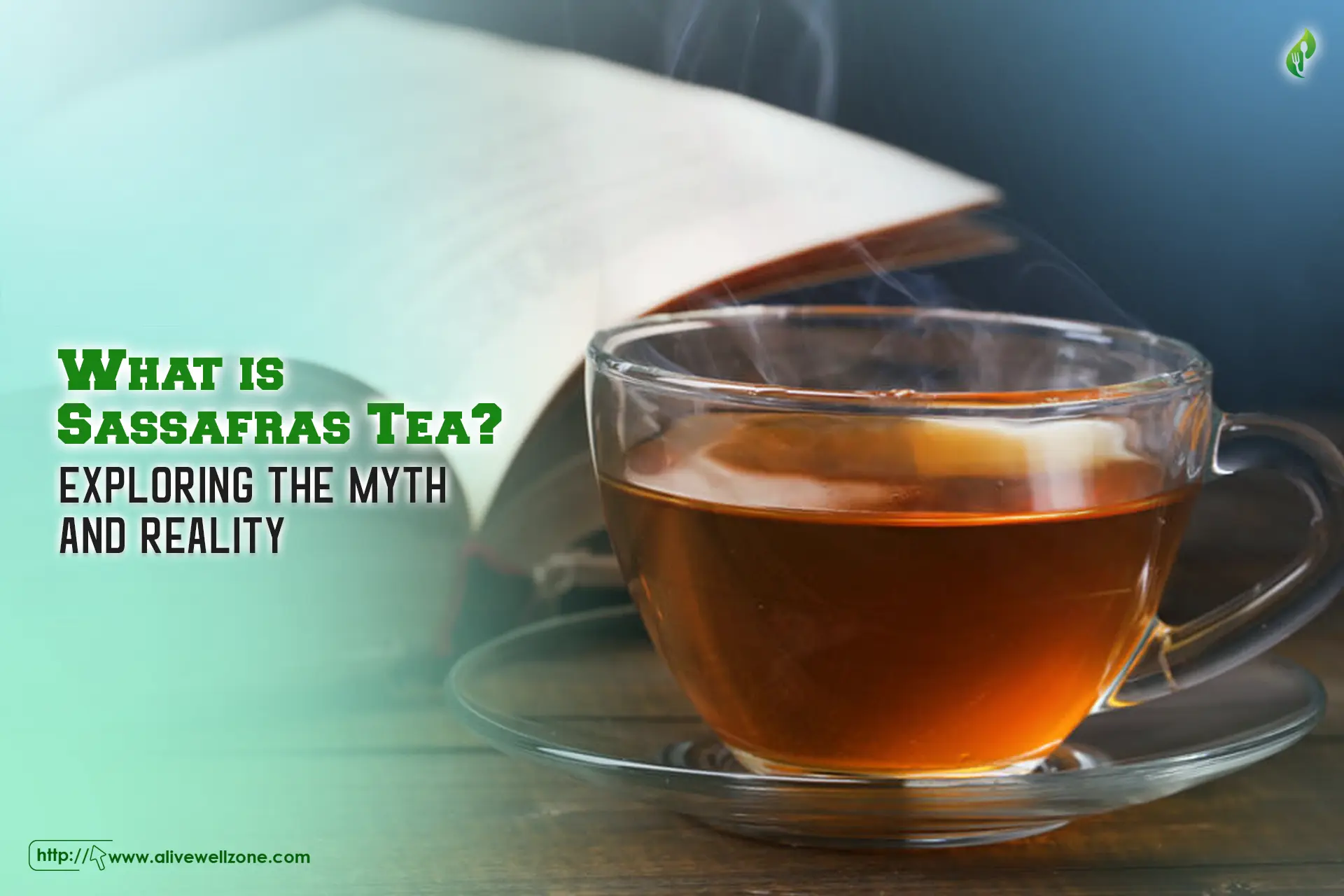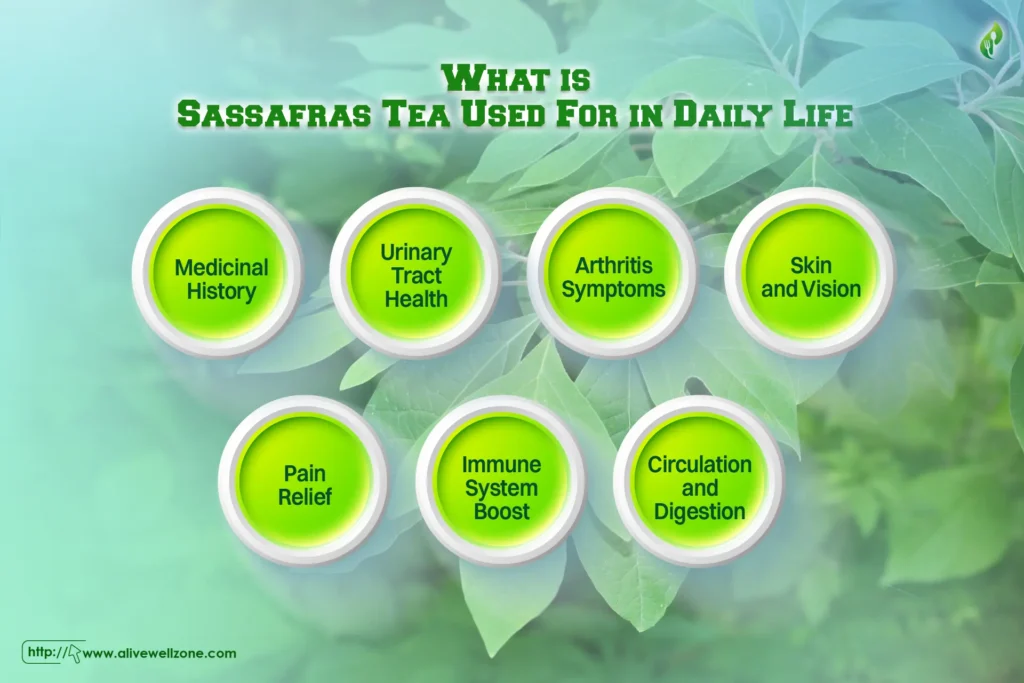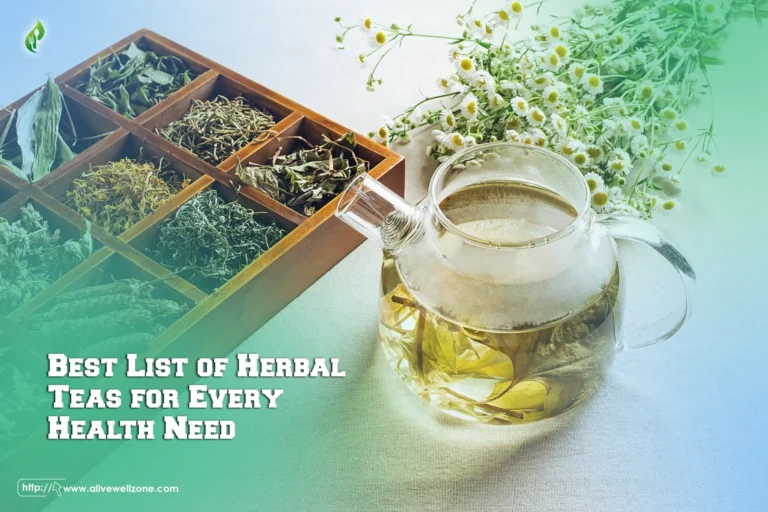
Last Updated on April 17, 2025 by Helena Akter
Sassafras tea has likely caught your attention with its unique flavor, historical significance, and possible health benefits. But now, you’re curious for more. What is sassafras tea? What’s the real history behind this tea? Can you make it at home, and is it safe to drink?
Well, Sassafras tea is a tasty beverage you can prepare by boiling sassafras roots and allowing them to steep. While it’s said to help with pain relief and increase immunity, there isn’t much scientific research to confirm these benefits. Plus, you’ll need to be cautious while drinking it regularly.
Stay with us as we’ll take you through the full story of sassafras tea, from its Native American roots to its modern uses and controversies. You’ll learn about its benefits, risks, and how to prepare it safely.
Key Takeaways
- Sassafras Tea Preparation: To make sassafras tea, thoroughly wash and optionally peel sassafras roots, boil in water, let steep to desired strength, and strain. You can sweeten it with honey or brown sugar if preferred.
- Health Benefits and Risks: Historically valued as a cure-all, sassafras tea is claimed to increase immune health, ease arthritis, and improve skin and vision. However, these benefits lack solid scientific support, and consumption in large doses can be hazardous.
- Safety Concerns: Sassafras contains safrole, a compound potentially harmful, especially in surgery, pregnancy, and for children. Consumption can exacerbate urinary tract issues and interact negatively with certain medications.
Origin of Sassafras Tea
The sassafras tree, a symbol of North America, has deeply influenced the continent’s history and economy. European explorers first encountered it when Native Americans introduced them to sassafras tea.
At that time this herbal tea made from the tree’s roots was thought to relieve stomach problems. And that thought led to a growing trade of sassafras root bark between the New World and Europe.
In the 16th century, Spanish botanist Monardes gave the tree the name “sassafras,” based on a Native American word from Florida. Its botanical name, Sassafras albidum, refers to the white hue of its wood.
For centuries, sassafras was a popular ingredient in food and medicine across America and Europe, valued for its fragrance and versatility.
What Is Sassafras Tea?
Sassafras tea is a traditional North American drink made from the roots, bark, or leaves of the Sassafras albidum tree. It’s known for its unique, root beer-like flavor and has been enjoyed for its taste and potential health benefits.
However, safrole, a compound in sassafras, was found to be carcinogenic, leading the FDA to ban its use in commercial products in 1976. While homemade sassafras tea is still consumed, you should be cautious due to possible health risks.
How to Make Sassafras Tea from Your Home
Sassafras tea is a traditional beverage known for its distinctive flavor. Here’s a straightforward guide on how to prepare this tea at home.
Ingredients
Collect the following ingredients —
- Fresh or dried sassafras roots.
- Water.
- Optional: Honey or brown sugar for sweetness.
Preparation
Here’s how you should make the tea —
- Thoroughly wash the roots to remove dirt.
- Optionally, peel the bark off to reduce potential toxins and enhance flavor.
- Cut the roots into pieces or use whole if small.
- Place the roots in a pot and cover with water.
- Boil, then simmer for 15 to 20 minutes.
- Remove from heat and let steep for 20 minutes to several hours, depending on desired strength.
- Strain the tea.
- Serve hot, sweeten if desired.
What is Sassafras Tea Used For in Daily Life
Sassafras tea has a storied history as a traditional herbal remedy, although modern scientific support for its benefits is sparse. Traditionally, it has been associated with a variety of health claims, from treating skin conditions to boosting immune health.
Here are some sassafras tea benefits —

1. Medicinal History
Native Americans historically viewed sassafras as a cure-all, a reputation that carried over to European settlers. Despite this, contemporary research doesn’t strongly support these claims.
2. Urinary Tract Health
It was once thought that sassafras tea could support urinary system health. However, this use lacks confirmation through rigorous scientific study.
3. Arthritis Symptoms
Some herbalists claim that sassafras can ease arthritis symptoms due to its purported anti-inflammatory properties. Nevertheless, Memorial Sloan Kettering Cancer Center points out that there is no scientific research confirming its effectiveness in treating inflammation.
4. Skin and Vision
Improvements in skin clarity and vision have been attributed to sassafras tea consumption. These effects are part of folk medicine and not backed up by modern studies.
5. Pain Relief
The tea has been used traditionally to treat sprains and reduce swelling from insect bites or stings, although these uses are based on anecdotal evidence rather than scientific data.
6. Immune System Boost
An enhanced immune system is another purported benefit of sassafras tea, cited by some herbal practitioners, though not supported by contemporary research findings.
7. Circulation and Digestion
Improved circulation and digestion are other traditional uses of sassafras tea. Like other claims, these lack the backing of verified scientific research but continue to be popular in herbal medicine circles.
Is Sassafras Tea Safe to Drink?
Sassafras tea, especially when consumed in large doses, can be harmful for some people due to its health risks.
- Surgery: Sassafras can slow the central nervous system, making you feel drowsy. It could interfere with anesthesia or other drugs used during surgery. So, stop using sassafras at least two weeks before surgery.
- Pregnancy and Breastfeeding: Pregnant women should avoid sassafras because it might lead to miscarriage. Its effects on breastfeeding women are unknown, so it’s safer to avoid it.
- Urinary Tract Problems: If you have urinary tract issues, sassafras could make them worse, so it’s best to avoid it.
- Children: Sassafras is highly risky for children. Even a small dose of sassafras oil can be fatal.
Final Words
So, what is sassafras tea? We’ve explored its rich history, traditional uses, and the steps to prepare it at home. Well, its unique flavor and cultural significance make it a fascinating beverage.
However, you must approach it with caution due to potential health risks, especially for certain groups like pregnant women and children. Whether you’re curious about its taste or its storied past, we hope we’ve given you a clear understanding.
So, enjoy responsibly, and let us know how your experience with sassafras tea!
FAQs
How much sassafras tea is too much?
Drinking 1-2 cups of sassafras tea daily is optimal for you. However, if you feel ill, you can drink up to 3 cups. Remember, exceeding this recommendation may result in diminishing returns and sensory overload.
Why is sassafras tea illegal to sell?
Sassafras tea is illegal to sell because it contains safrole, a potential carcinogen linked to liver cancer in animals. FDA bans since 1976 target sassafras root bark but allows safrole-free products. Always check legality and health advice before use.
What does sassafras tea taste like?
Sassafras tea has a flavor reminiscent of root beer, largely because it was historically featured in root beer recipes until 1960. For the best taste, you can strain it using a coffee filter and sweeten it as desired.







